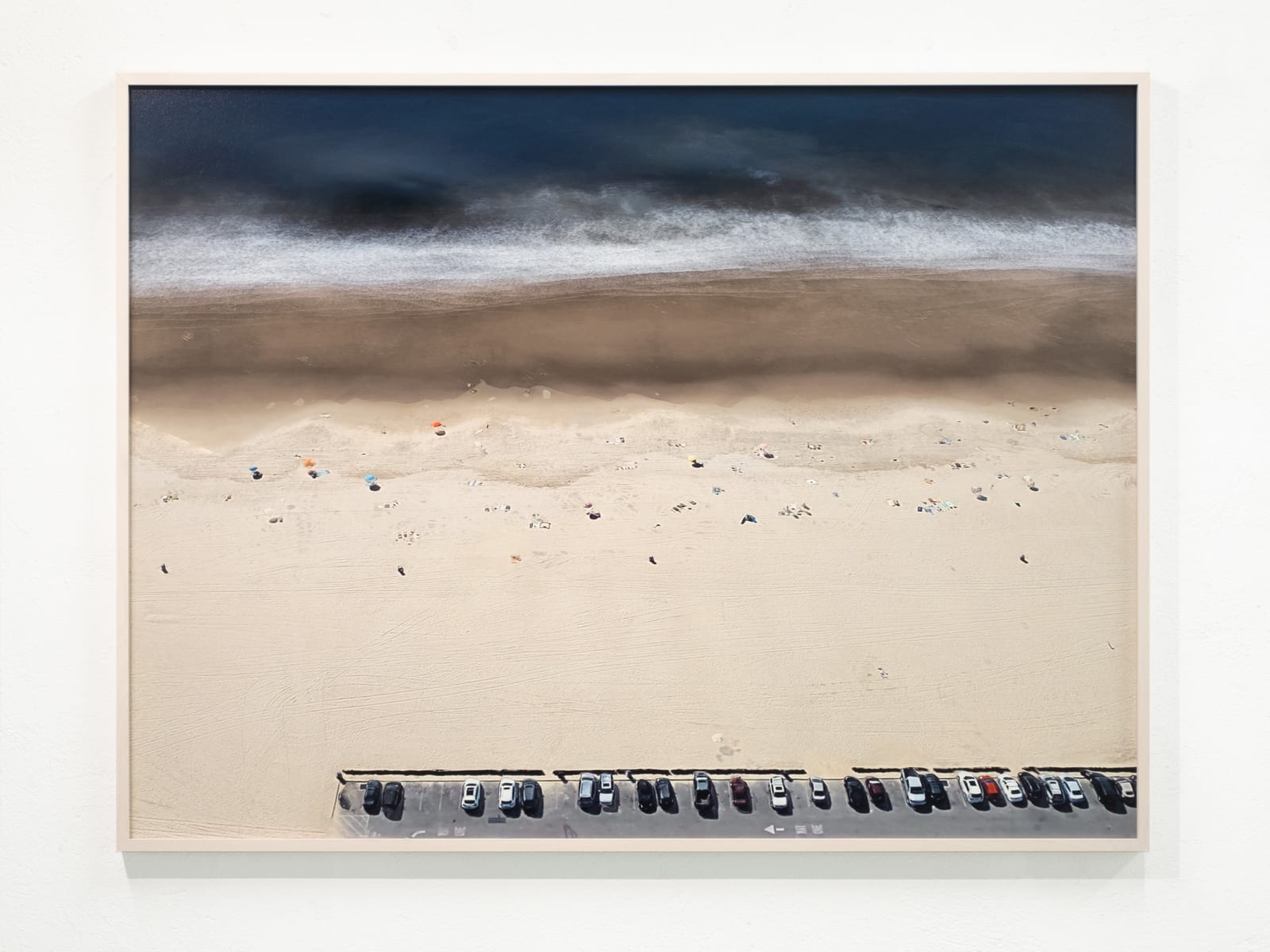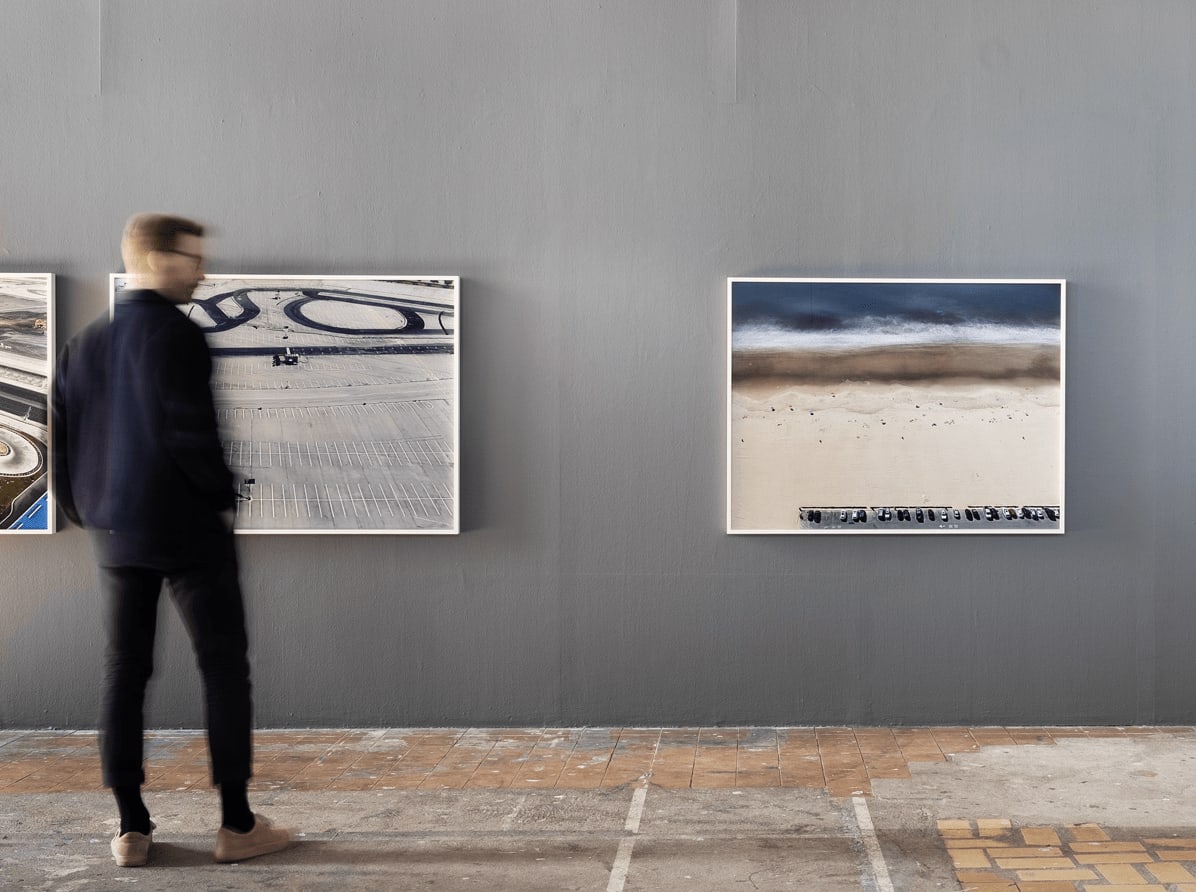Eva-Teréz Gölin Swedish, b. 1972
Further images
At a time when dry periods are prolonged and heat waves increase in number, the Fuel series seeks to visualize our dependence on fossil fuels as well as our inability to change our behavior. In Google’s 3D rendering of the world, humans are largely invisible. Only on the beaches are our bodies, or traces of them, written off, while we are still and enjoying the rising average temperature. The bird’s perspective here conveys a picture of vulnerability and reveals our vulnerability to the forces of nature.
In Beach 1, the bird's-eye view exposes our insignificance as we unknowingly enjoy ourselves in the warmth, with the dark sea on one side and an oil-stained parking lot on the other. Crisscrossing the entire sandy beach, wheel tracks are also visible, bearing witness to the passage of vehicles over the surface.
Beach (series FUEL)
I Beach 1 blottlägger fågelperspektivet vår litenhet där vi aningslöst njuter i värmen med det mörka havet på ena sida, och en av olja fläckad parkeringsplats på den andra. Kors och tvärs över hela sandstranden syns också hjulspår som vittnar om fordons framfart över ytan. Den strandscen som möter betraktaren i Beach 3, kan vid första anblicken ge ett njutningsfullt intryck; solparasoller, ett turkost hav med vitskummande vågor, och solbadare utsträckta på sina badhanddukar. Men spår av något oroande kan anas. I ett parti har sanden lämnats våt som efter en jättevåg, och endast skuggbilder av de människor som tidigare befann sig här är synliga.







